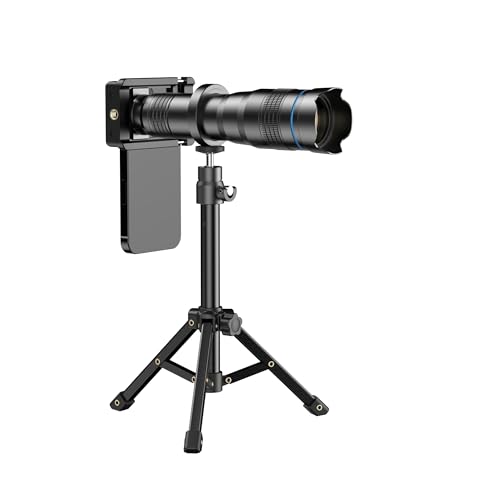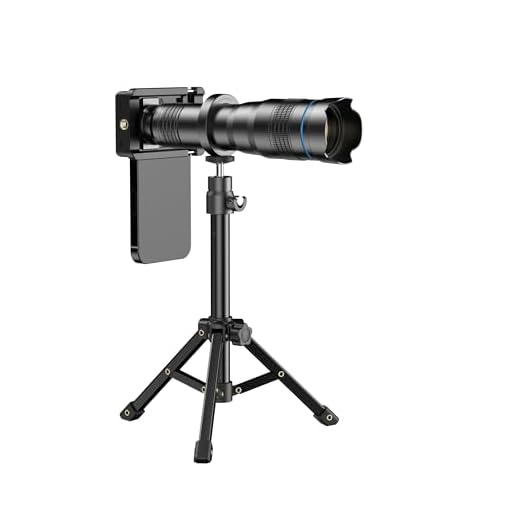




Your iPhone camera is a powerful tool, capable of capturing stunning photos and videos with just a tap of a button. However, like any camera, it may need to be calibrated from time to time to ensure optimal performance.
Calibrating your iPhone camera can help improve the accuracy of colors, focus, and exposure in your images. Whether you’re an amateur photographer or a seasoned pro, taking the time to calibrate your camera can make a world of difference in the quality of your photos.
But how exactly do you calibrate your iPhone camera? In this guide, we’ll walk you through the steps to calibrate your camera settings and achieve the perfect shot every time.
Understanding iPhone Camera Calibration
Calibrating your iPhone camera is essential to ensure accurate colors, exposure, and focus in your photos. Understanding the calibration process can help you take better pictures and make the most of your iPhone’s camera capabilities.
Here are some key points to consider when calibrating your iPhone camera:
- White Balance: Adjusting the white balance settings on your iPhone can help you capture colors as accurately as possible. You can use the built-in presets or manually adjust the white balance for different lighting conditions.
- Exposure: Understanding exposure settings, such as adjusting the exposure compensation or using the exposure lock feature, can help you capture well-balanced photos with the right amount of light.
- Focus: Ensuring the focus is sharp and accurate is crucial for getting clear and crisp images. You can tap on the screen to focus on a specific area or use manual focus for more control.
- HDR: High Dynamic Range (HDR) mode can help you capture photos with better contrast and detail in both bright and dark areas. Understanding when to use HDR can improve the overall quality of your photos.
By understanding and mastering these calibration techniques, you can elevate your iPhone photography skills and capture stunning images with your device.
Importance of Calibrating Your Camera
Calibrating your camera is crucial for ensuring the accuracy and consistency of your photos. By calibrating your camera, you can improve the color accuracy, white balance, and overall image quality of your photos.
Without proper calibration, your photos may appear distorted or have inaccurate colors, which can affect the overall quality of your work. Calibrating your camera can help you achieve more professional-looking results and ensure that your images accurately represent the scene you are capturing.
Benefits of Camera Calibration:
- Improved color accuracy
- Consistent white balance
- Enhanced image quality
Checking Camera Settings
Before calibrating your iPhone camera, it’s important to check and adjust the camera settings to ensure accurate results. Start by opening the Camera app on your iPhone and navigating to the settings menu. Make sure that the camera is set to the highest resolution and quality settings available. This will help you capture detailed and clear images for calibration.
Next, check the exposure and focus settings to make sure they are set correctly. You can adjust these settings by tapping on the screen while in camera mode to lock the focus and exposure on a specific area. This will help you calibrate the camera for consistent and accurate results.
Finally, check the white balance settings to ensure that colors are accurately represented in your photos. You can adjust the white balance by selecting different presets or manually adjusting the color temperature. Proper white balance is essential for accurate calibration of your iPhone camera.
Adjusting Exposure and Focus
One of the key factors in calibrating your iPhone camera is adjusting the exposure and focus settings. To ensure your photos are clear and well-exposed, follow these steps:
| Adjusting Exposure: |
| 1. Open the camera app on your iPhone. |
| 2. Tap on the area of the screen where you want to adjust the exposure. |
| 3. A yellow box will appear with a sun icon next to it. Slide your finger up or down on the screen to adjust the exposure level. |
| 4. Check the exposure by taking a test photo and adjusting as needed. |
| Adjusting Focus: |
| 1. Tap on the object or subject you want to focus on in the camera frame. |
| 2. A yellow box will appear around the object, indicating that the focus is locked. |
| 3. If you want to adjust the focus manually, tap and hold on the object until you see an AE/AF Lock notification. |
| 4. Release your finger and adjust the focus point by tapping on a different area of the screen. |
Using Third-Party Apps for Calibration
If you prefer a more advanced approach to calibrating your iPhone camera, you can use third-party apps specifically designed for this purpose. These apps offer additional features and customization options to fine-tune your camera settings.
Some popular third-party camera calibration apps include Camera+ 2, ProCam 7, and Obscura. These apps allow you to adjust settings such as exposure, white balance, focus, and ISO to achieve the desired results. They also provide tools for manual control over various aspects of the camera.
Steps to Calibrate Your Camera Using Third-Party Apps:
- Download and install a camera calibration app from the App Store.
- Open the app and navigate to the settings or calibration section.
- Follow the on-screen instructions to adjust the camera settings according to your preferences.
- Use the app’s features to capture test images and compare the results to fine-tune the settings.
- Save the calibrated settings for future use or reset them as needed.
Understanding White Balance
White balance is a crucial aspect of photography that affects the color temperature of your photos. It is the process of adjusting the colors in your images to ensure that white objects appear white in the final photo, regardless of the lighting conditions. A proper white balance setting can make a significant difference in the overall look and feel of your photos.
There are several white balance presets on the iPhone camera, such as Auto, Daylight, Cloudy, Tungsten, Fluorescent, and more. Experiment with these presets in different lighting conditions to see which one works best for your specific situation. Additionally, you can manually adjust the white balance by using a custom white balance setting or adjusting the color temperature slider in post-processing.
Calibrating Camera for Different Environments
Calibrating your iPhone camera for different environments is essential to ensure accurate and high-quality photos. Here are some tips to help you calibrate your camera for various settings:
1. Natural Light
When shooting in natural light, adjust the exposure and white balance settings on your camera to capture the true colors and details of the scene. Avoid harsh sunlight and find the perfect angle to avoid overexposure or shadows.
2. Low Light
In low-light environments, use the camera’s built-in flash or an external lighting source to illuminate the subject. Adjust the ISO settings to reduce noise and ensure clear images. Experiment with different angles and distances to find the best lighting balance.
Tips for Better Calibration Results
1. Make sure to calibrate your iPhone camera in a well-lit environment to ensure accurate results.
2. Clean the camera lens before calibration to avoid any distortions or inaccuracies in the calibration process.
3. Hold your iPhone steady and level while calibrating to prevent any errors caused by movement or tilting.
4. Follow the calibration instructions carefully and pay attention to any prompts or guidelines provided.
5. If you encounter any issues during calibration, restart the process and ensure that your iPhone is functioning properly.
6. Avoid calibrating your iPhone camera in extreme lighting conditions, as this can affect the accuracy of the calibration results.
7. Consider using a third-party calibration app for more advanced calibration options and features.
Testing the Calibrated Camera
Once you have successfully calibrated your iPhone camera, it’s important to test it to ensure that the adjustments have been made correctly and the camera is functioning as expected. Here are some steps you can take to test the calibrated camera:
- Take a series of photos in different lighting conditions to see how the camera performs.
- Compare the quality and color accuracy of the photos taken before and after calibration.
- Test the autofocus and exposure settings to make sure they are working properly.
- Record a video to check the stability and focus of the camera.
By testing your calibrated camera in various situations, you can ensure that the calibration process was successful and that your iPhone camera is now optimized for better performance.
Troubleshooting Calibration Issues
If you are experiencing calibration issues with your iPhone camera, there are a few troubleshooting steps you can take to try and resolve the problem. Here are some common solutions:
| 1. Restart Your iPhone: | Sometimes a simple restart can fix minor calibration issues. Try restarting your iPhone and see if the problem persists. |
| 2. Update iOS: | Make sure your iPhone is running the latest version of iOS. Software updates often include fixes for camera calibration issues. |
| 3. Reset Camera Settings: | Go to Settings > General > Reset > Reset All Settings. This will reset all your camera settings to default, which may help resolve calibration problems. |
| 4. Clean Camera Lens: | Check if there is any dirt or smudges on the camera lens. Clean it gently with a soft, lint-free cloth to ensure clear calibration. |
| 5. Contact Apple Support: | If none of the above solutions work, it may be a hardware issue. Contact Apple Support for further assistance and possible repair options. |






